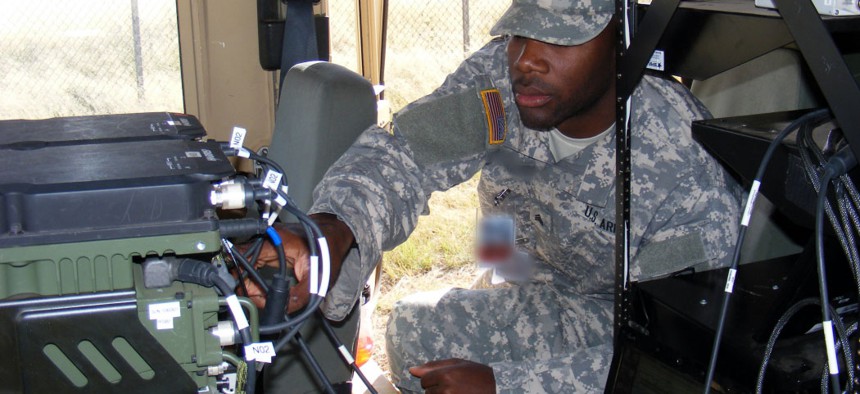Euro effort demos secure, interoperable communications
European partners claim they have demonstrated the ability to use a common radio waveform for tactical communications.
Reports over the past year highlighting difficulties maintaining secure battlefield communications among NATO partners have raised concerns about interoperability along with the availability of programmable encryption within the western alliance. Those concerns have only grown as the Russian military fields improved electronic warfare systems such as communications jamming.
With U.S. export controls limiting the sale of communications gear equipped with the most secure encryption algorithms, a European software-defined radio initiative appears to be attempting to fill the current comunications gap. Two companies, Bittium, a Finish developer of secure tactical communications gear, and Rome-based partner Leonardo-Finmeccanica said this week they are demonstrating what they tout as the "first European cross-platform military radio technology for effective joint operations."
The demonstration is designed to show how different European military units can communicate in joint operations using a common waveform "regardless of the actual radio platforms they use." The joint communications architecture is based on the European Secure Software Defined Radio program, the partners noted.
In an interoperability demonstration during a military exhibition in Paris, the partners also employed the European High Data Rate Waveform designed to improve tactical communications during joint military operations. Leonardo-Finmeccanica's software-defined tactical radio was connected via Bittium's tactical wireless Internet protocol network to establish a network for streaming video and other information.
The Bittium wireless platform is currently used by the Finnish military to establish a wireless broadband IP network on the battlefield. The Finnish company stressed that its network infrastructure is compatible with existing wire-line and wireless infrastructure.
The Italian aerospace manufacturer's software-defined radio is a mobile 4-channel platform able to host a range of waveforms between 4 MHz and 2 GHz.
The partners cited the European software-defined radio initiative as critical to helping European forces communicate during joint operations by allowing different radio platforms to use a common waveform.
Whether the European communications initiative could help relieve NATO's secure tactical communications difficulties remains to be seen. But technology advances in areas like programmable radios appear for now to be making more progress toward secure, joint communications than decades of NATO edicts about interoperability.
The radio program launched in 2009 by the European Defense Agency aims to spur closer cooperation in coalition operations. Along with Finland and Italy, France, Poland, Spain and Sweden sponsor the effort. The communication program's initial phase established the framework for the European software-defined radio architecture. The next phase will focus on demonstrating battlefield capabilities as mobile military units rely more heavily on secure, interoperable communications.
NEXT STORY: Analytics could be the key to cyber defense




